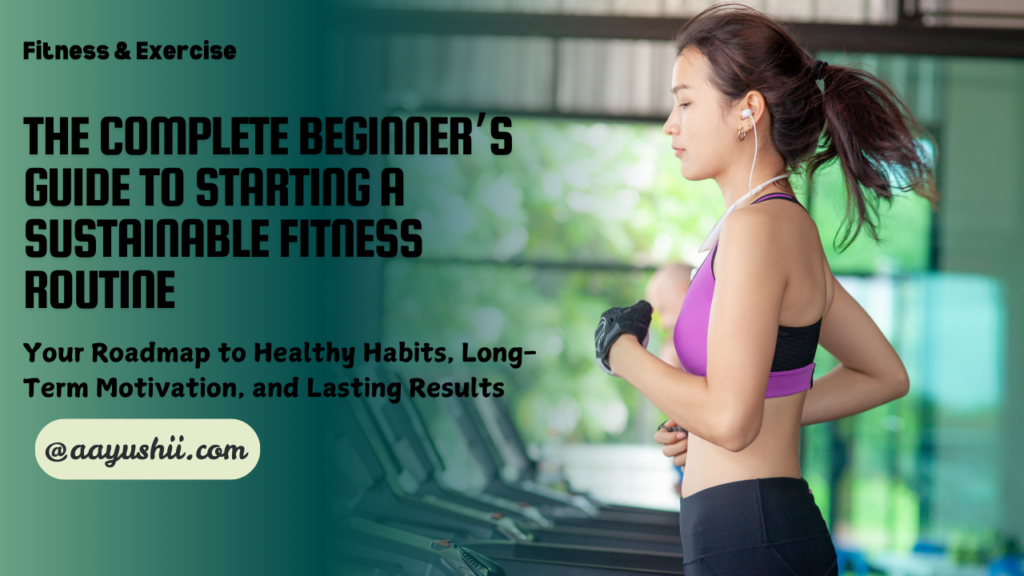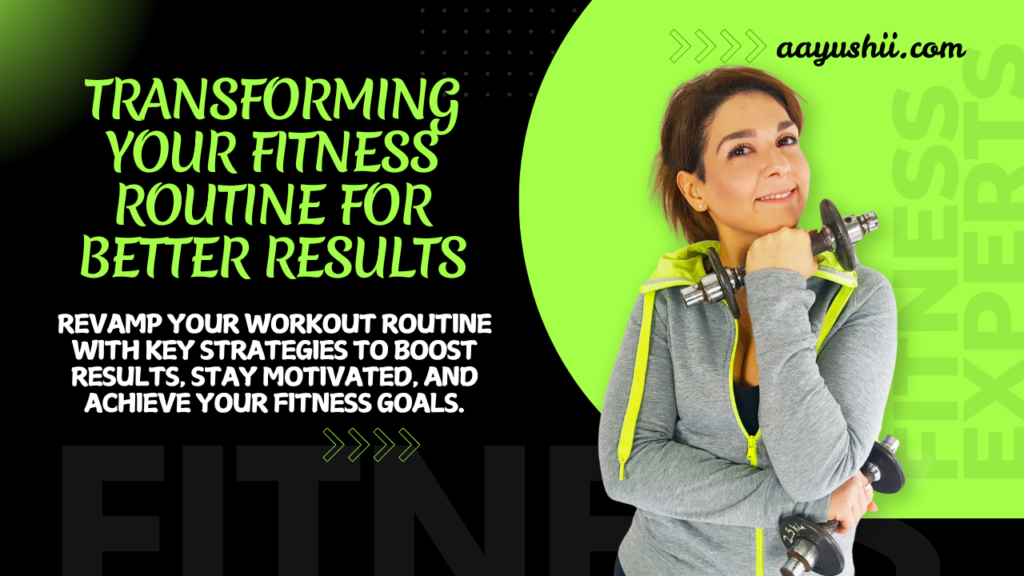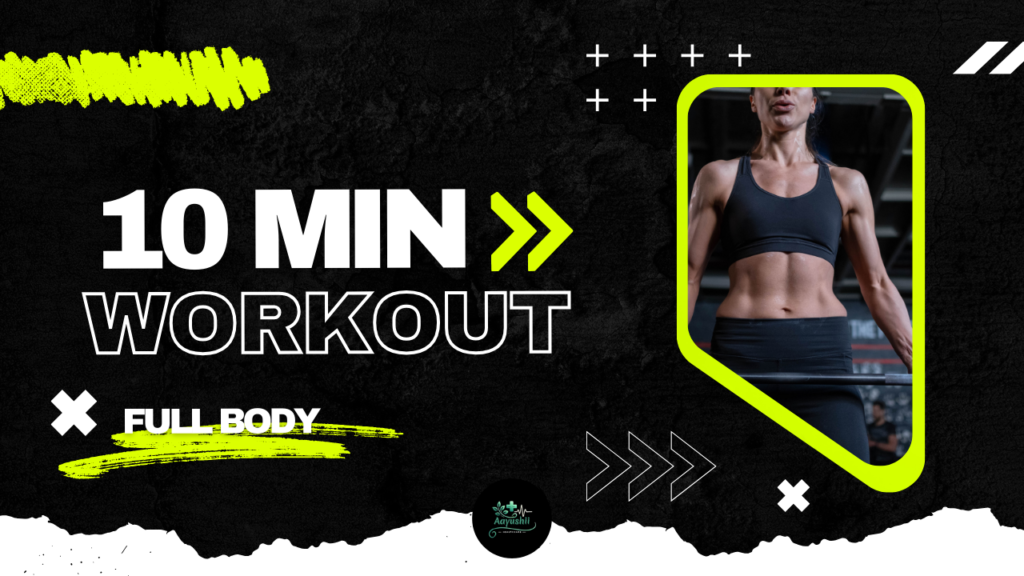Starting a fitness journey is often fueled by excitement and the desire to improve health, physique, and mental well-being. However, many beginners face burnout or lose motivation after a few weeks due to demanding workout plans or extreme diets. The truth is, fitness progress is a marathon, not a sprint, and sustainability is key to success.
In this beginner’s guide, we’ll cover everything you need to create a sustainable fitness routine. From setting realistic goals to understanding key fitness components like strength, cardio, and flexibility, we’ll guide you step by step. We’ll also dive into important topics like rest, recovery, nutrition, mindset, and how to stay motivated. By the end, you’ll have the knowledge and tools to build a balanced, long-lasting routine that helps you achieve and maintain your goals. No matter your schedule or budget, this guide offers practical tips, proven strategies, and tools to help you succeed. Ready to transform your fitness journey? Let’s get started!
Table of Contents
1. Why a Sustainable Fitness Routine Matters

A sustainable fitness routine is one that you can stick to not just for weeks or months, but for years or even a lifetime. Rather than quickly shedding weight or gaining strength only to revert to unhealthy habits later, a sustainable approach to fitness integrates seamlessly into your lifestyle, minimizes risks of injury, and fosters ongoing mental and emotional well-being. Whether your primary objective is to lose weight, build lean muscle, improve endurance, or simply lead a healthier life, sustainability is key for ensuring you don’t lose momentum.
2. Understanding “Sustainable” in Fitness

Sustainability in the context of fitness is about creating habits and routines that can be maintained indefinitely. Instead of engaging in extreme activities or diets that you can only bear for a short period, you focus on practices that support both your short-term ambitions and your long-term well-being. These practices foster steady progress, reduce your risk of injuries, and allow you to integrate fitness into the broader context of your life—family, work, social events, and personal hobbies.
2.1 Beyond Quick Fixes
Many beginners are lured by quick fixes: promises like “lose 10 pounds in a week,” “gain massive muscle in 30 days,” or diets that drastically cut out entire food groups. Such methods can lead to rapid (but often temporary) results. More importantly, they can be unsustainable and even damaging to your health. Approaching fitness sustainably means recognizing that healthy progress takes time. You focus on building consistent habits that deliver results gradually, but steadily.
2.2 The Role of Habits
A truly sustainable routine is underpinned by habits—small, repeated behaviors that become automatic over time. Rather than obsessively trying to push through every workout with sheer willpower, your ultimate goal is to create an environment and mindset where choosing fitness becomes second nature. This approach typically involves:
- Starting small and gradually increasing intensity
- Using strategies like habit stacking (e.g., attaching a new habit to an already established one)
- Celebrating small milestones, which helps reinforce positive behaviors
2.3 Balancing Discipline and Flexibility
While discipline is crucial for forming healthier habits, flexibility prevents burnout. Giving yourself grace for missed workouts or an occasional indulgence can help you bounce back without derailing your overall progress. The “all-or-nothing” mindset—where one slip-up triggers complete abandonment—can sabotage your journey. Instead, sustainability honors the idea that life events, stressors, and normal fluctuations will occur. Learning to adapt your workouts, diet, and mindset to these changes ensures you remain on track for the long haul.
3. Setting Realistic and Achievable Goals
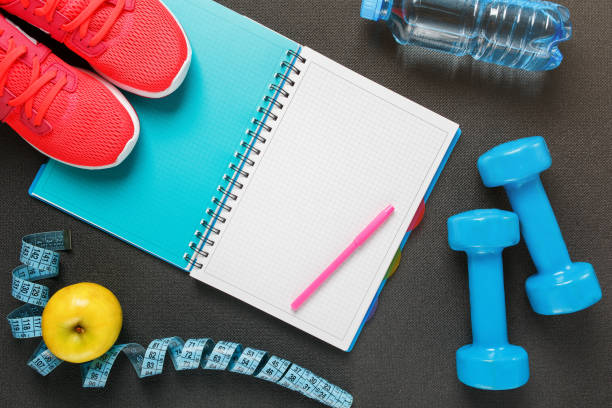
One of the most pivotal steps in starting a fitness routine is goal setting. Having a clear target helps you stay focused, measure your progress, and sustain motivation. However, many beginners stumble by setting vague or overly ambitious goals, such as “I want six-pack abs in two weeks” or “I will run a marathon next month without prior training.” While big dreams have their place, unrealistic timelines can lead to disappointment and injuries.
3.1 The SMART Framework
Achieving fitness success starts with setting clear, actionable goals. The SMART framework—Specific, Measurable, Achievable, Relevant, and Time-Bound—provides a structured approach to goal-setting, ensuring you stay focused and motivated. Here’s how to apply it effectively:
- Specific: Clearly define what you want to accomplish. Instead of saying, “I want to lose weight,” aim for a more precise target like, “I want to lose 5 pounds of body fat.” Specific goals eliminate ambiguity and give you a clear direction.
- Measurable: Attach measurable criteria to track progress. Whether it’s monitoring body-fat percentage, tracking weight, or counting the number of push-ups you can complete, measurable goals allow you to evaluate performance and stay accountable.
- Achievable: Make sure your goal is realistic based on your current fitness level, schedule, and resources. Setting goals that challenge you without being overwhelming keeps you motivated and prevents burnout. For example, aiming to run a 5K in six weeks may be more achievable than preparing for a marathon in the same timeframe.
- Relevant: Align your fitness goals with your broader health and lifestyle priorities. If improving overall well-being is important, focus on objectives like reducing cholesterol, increasing endurance, or strengthening core stability—goals that contribute directly to long-term health.
- Time-Bound: Set a clear deadline to create urgency and structure. Instead of leaving goals open-ended, specify a timeframe such as, “I will reduce my body fat by 3% in three months.” Deadlines keep you focused and motivated to make consistent progress.
By following the SMART framework, you transform vague ambitions into actionable steps, turning fitness aspirations into measurable achievements. Whether you’re aiming to improve strength, endurance, or overall health, this approach keeps you organized and on track.
3.2 Short-Term vs. Long-Term Goals: Building Blocks for Success
Setting both short-term and long-term goals is crucial for creating a sustainable and rewarding fitness journey. These goals work together to provide direction, track progress, and maintain motivation, but they serve distinct purposes.
Short-Term Goals: The Power of Quick Wins
Short-term goals act as stepping stones, offering quick, achievable milestones that keep you engaged and motivated. They provide immediate feedback, reinforcing positive behaviors and building momentum. For example:
- “Walk for 30 minutes, three times this week.”
- “Perform three sets of 10 squats with proper form.”
Psychologically, accomplishing these smaller tasks triggers the brain’s dopamine reward system, which reinforces habits and promotes consistency. From a behavioral science perspective, frequent wins also build self-efficacy—the belief in your ability to succeed—which plays a pivotal role in sustaining long-term habits.
Short-term goals allow you to test, adjust, and refine your approach without feeling overwhelmed. They focus on process-oriented actions rather than distant outcomes, ensuring you stay committed and celebrate incremental progress.
Long-Term Goals: The Vision That Drives You
Long-term goals define the bigger picture and provide a sense of purpose behind your efforts. These are often performance- or outcome-based, such as:
- “Run a half marathon in 12 months.”
- “Achieve 10 unassisted pull-ups within a year.”
From a scientific perspective, long-term goals leverage goal-setting theory, which emphasizes the importance of challenging yet achievable objectives in driving sustained effort and focus. They tap into intrinsic motivation—the deep, personal reasons you started your fitness journey, such as improving health, enhancing endurance, or boosting confidence.
While long-term goals create vision, they also require patience and adaptability. Physiological adaptations, like building muscle or improving cardiovascular endurance, take time and consistency. Tracking progress through short-term milestones ensures steady movement toward these larger objectives.
Blending Short- and Long-Term Goals
The key to sustainable success lies in balancing these two types of goals:
- Short-term goals build daily habits and keep you motivated with quick wins.
- Long-term goals keep you focused on the bigger picture and give purpose to your daily actions.
For example, if your long-term goal is to complete a marathon in a year, your short-term goals might include running 5K races within three months or improving your mile time over the next four weeks.
This layered approach not only makes large goals more manageable but also aligns with progressive overload principles—gradually increasing intensity and challenge to ensure continuous improvement without burnout. Combining short-term wins with long-term vision creates a roadmap for sustainable fitness success.
3.3 Revisiting and Adjusting Your Goals
Fitness isn’t linear. You might find that your initial goals shift as you discover new activities you enjoy or new health markers you want to improve. Life circumstances (changing jobs, recovering from injuries, or experiencing major personal events) may also require adjusting your goals. It’s perfectly acceptable—and wise—to revisit and refine your targets regularly. Doing so ensures your goals remain both challenging and realistic.
4. Tracking Progress and Staying Accountable

Tracking your workouts and other lifestyle factors is a potent way to stay on course and gauge improvements. Even the most enthusiastic beginner can start strong but lose momentum if they have no measurable data to review. Seeing that you have, for example, increased your plank time from 15 seconds to 45 seconds over a month can be a huge confidence booster. Similarly, noticing that your mile time has dropped by 30 seconds can inspire you to keep going.
4.1 Methods of Tracking
There are various tools and methods for tracking:
- Workout Journals: A simple notebook or a digital spreadsheet to record workout details (sets, reps, duration, and weight).
- Fitness Apps: Apps like MyFitnessPal, Fitbit, or Strava log steps, calories, water intake, and even sleep quality.
- Wearable Devices: Fitness trackers and smartwatches provide real-time metrics on heart rate, distance covered, and even stress levels.
- Online Platforms: Join communities like Strava challenges or Reddit fitness for support and motivation.
- Smart Scales: Track body fat, weight, and muscle mass.
- Food & Hydration Tracking: Use apps to log meals and track water intake.
This keeps your tracking simple, while ensuring you’re capturing the most important metrics for progress.
4.2 Self-Assessment and Reflection
Progress tracking isn’t solely about numbers. Subjective assessments—like how you feel during your workouts, your energy levels throughout the day, and how well you’re sleeping—can also be meaningful indicators of your overall health.
Set aside time every week or month to reflect on your data and experiences. Ask yourself:
- Am I improving in my chosen metrics (e.g., weight lifted, distance run, flexibility benchmarks)?
- Do I feel more energized, less stressed, or happier?
- Are there areas where I consistently struggle (e.g., skipping warm-ups, eating inconsistently)?
This simple habit of self-assessment helps you make data-driven decisions, rather than relying on fleeting emotions or guesswork.
4.3 Accountability Partners
Staying accountable can be a challenge if no one else knows about your goals. Share your fitness targets with a friend, family member, or online community. Better yet, find a workout buddy who has similar objectives. Having someone check in on your progress or—better yet—join you for workouts creates an additional layer of responsibility. This sense of collective momentum can keep you motivated during those inevitable days when you’d prefer to skip your session.
5. Exploring the Key Fitness Components

A sustainable fitness routine is multifaceted. It doesn’t hinge on one single component (like only running or only weightlifting); rather, it integrates multiple aspects to create a balanced approach. Below, we detail four main pillars—cardio training, strength training, flexibility and mobility, and rest and recovery—that, when combined strategically, form the backbone of a holistic fitness plan.
5.1 Cardio Training
Cardiovascular exercise (cardio) targets your heart, lungs, and circulatory system. When performed regularly, it can improve endurance, boost metabolism, control weight, and reduce risks of chronic diseases (such as high blood pressure, diabetes, and heart disease). As a beginner, focusing on simple yet consistent cardio sessions will help you build a solid aerobic foundation.
5.1.1 Choosing Your Cardio Activity
There’s a wide array of cardio options:
- Walking or Jogging: Ideal for beginners because it’s low-cost and accessible. Start with brisk walking if jogging feels too intense.
- Cycling: Indoor or outdoor cycling is low-impact, making it gentler on the joints than running.
- Swimming: Provides a full-body workout and is excellent for those with joint issues.
- Rowing Machines: Effective for both cardio and some upper-body strengthening.
- Dance Classes or Aerobics: Zumba, high intensity interval training (HIIT), step aerobics, or hip-hop dance can make cardio fun and social.
The best activity is the one you enjoy and can see yourself doing regularly. That enjoyment factor often makes the difference between sticking with it long-term versus dropping off when the initial novelty fades.
5.1.2 Intensity and Duration
Beginners often wonder, “How hard should I push myself?” The general recommendation is to start with moderate intensity—enough to raise your heart rate and break a sweat, but still be able to maintain a conversation. Over time, you can incorporate intervals of higher intensity. Aim for at least 150 minutes of moderate-intensity cardio per week, or 75 minutes of vigorous-intensity activity if you’re ready for a bigger challenge.
5.1.3 Progression Tips
- Gradual Increases: Start with short sessions (e.g., 10-15 minutes) and slowly work your way up.
- Interval Training: Incorporate short bursts of speed or intensity, followed by recovery intervals (for example, 30 seconds fast jogging, 90 seconds walking).
- Cross-Training: Vary your cardio activities (e.g., mix jogging with cycling or swimming) to avoid overuse injuries and boredom.
5.2 Strength Training
Strength training is often misunderstood by beginners who worry they might “bulk up” too fast. In truth, everyone benefits from building muscle—stronger bones, increased metabolism, and better overall functional fitness. Whether you want to lift heavy weights or use only bodyweight exercises, strength training is essential for a balanced, sustainable routine.
5.2.1 Benefits of Strength Training
- Metabolic Boost: More muscle mass increases your basal metabolic rate, helping you burn calories even when you’re not exercising.
- Bone Health: Weight-bearing exercises (like squats, lunges, and push-ups) improve bone density, helping to prevent osteoporosis.
- Functional Strength: Everyday tasks, from carrying groceries to climbing stairs, become easier as your strength improves.
- Injury Prevention: Strengthening muscles stabilizes joints, reducing the likelihood of strains, sprains, and other injuries.
5.2.2 Essential Exercises for Beginners
Focus on compound exercises that work multiple muscle groups simultaneously:
- Squats (targeting quadriceps, hamstrings, glutes, and core)
- Lunges (lower body strength and balance)
- Push-Ups (chest, shoulders, and triceps)
- Pull-Ups or Assisted Pull-Ups (back, shoulders, and arms)
- Planks (core stability)
You can perform these with just your bodyweight or add resistance (e.g., dumbbells, resistance bands, kettlebells) as you get stronger. Aim for 2-3 strength training sessions per week, leaving at least one day of rest between sessions for the same muscle group.
5.2.3 Proper Form and Injury Prevention
Form is paramount, especially for beginners. If you’re unsure about technique, consider:
- Working with a qualified trainer who can correct your form
- Watching instructional videos from reputable fitness professionals
- Starting with very light weight or only bodyweight to master the movement pattern
Pushing yourself too hard or ignoring proper form can lead to injuries, which is the quickest way to derail your routine. Progress gradually—allow your body to adapt safely.
5.3 Flexibility and Mobility
Often overlooked by beginners, flexibility and mobility are integral to a sustainable fitness routine. Flexibility refers to the range of motion of your muscles and joints, while mobility is your ability to move through your full range of motion with control.
5.3.1 Benefits of Flexibility and Mobility Work
- Enhanced Performance: Improved range of motion can make your cardio and strength training exercises more efficient.
- Reduced Risk of Injury: Stiff muscles and joints are more prone to strains. Regular stretching and mobility work reduce this risk.
- Better Posture: Tight muscles can pull your body out of alignment. Regular stretching helps correct imbalances and fosters good posture.
- Quicker Recovery: Light mobility exercises (like foam rolling) can facilitate blood flow and nutrient delivery to muscles, aiding recovery.
5.3.2 Types of Flexibility and Mobility Exercises
- Static Stretching: Holding a stretched position for 15-30 seconds (e.g., standing hamstring stretch). Best done after a workout when muscles are warm.
- Dynamic Stretching: Controlled movements through a full range of motion (e.g., leg swings, arm circles). Great as part of your warm-up to gently prepare muscles.
- Yoga: Combines flexibility work with balance and mindfulness. Ideal for beginners and advanced practitioners alike.
- Foam Rolling / Myofascial Release: Using a foam roller or massage ball to break up adhesions in muscle tissue, promoting relaxation and flexibility.
5.3.3 Integrating Flexibility and Mobility Into Your Routine
At minimum, aim for 5-10 minutes of dynamic stretching before your workouts and 5-10 minutes of static stretching afterward. If possible, dedicate a day or session each week to deeper flexibility and mobility work. This approach ensures your body remains limber and prepared for more intense exercises.
5.4 Rest and Recovery
Rest and recovery are non-negotiable in a sustainable fitness routine. Intense training depletes energy reserves and micro-tears your muscles. It’s during rest that your body repairs these micro-tears, building stronger muscles and increasing endurance capacity.
5.4.1 The Importance of Sleep
- Hormonal Regulation: Adequate sleep (7-9 hours) helps regulate hormones like cortisol (stress hormone) and growth hormone (crucial for tissue repair).
- Performance Enhancement: Well-rested individuals demonstrate better reaction times, coordination, and endurance.
- Mental Clarity: Sleep deficits impair cognitive functions, making it harder to stay motivated and focused.
5.4.2 Active Recovery
Not all “rest” has to be passive. Active recovery involves low-intensity exercise like light walking, yoga, or gentle cycling on days you aren’t doing intense workouts. This aids blood flow, reduces soreness, and keeps you moving without overly stressing your body.
5.4.3 Scheduling Recovery
Beginners often underestimate the amount of rest they need. A good rule of thumb is to allow at least 48 hours of recovery for the same muscle group after an intense strength training session. Vary your workout types—if you do a hard leg workout one day, the next can be upper-body focused or moderate-intensity cardio.
6. Nutrition and Hydration for Sustained Energy

No matter how perfectly you train, nutrition can make or break your progress. Food provides the building blocks (proteins, carbs, fats) that fuel and rebuild muscles, while micronutrients (vitamins and minerals) support essential bodily functions. Proper hydration ensures that your body can transport nutrients efficiently, regulate temperature, and maintain cellular functions.
6.1 Macronutrients: Balancing Proteins, Carbs, and Fats
- Proteins: Crucial for muscle repair and growth. Lean meats, fish, eggs, beans, and tofu are excellent protein sources.
- Carbohydrates: Provide the primary energy for workouts. Complex carbs like whole grains, fruits, and vegetables offer sustained energy and essential fiber.
- Fats: Essential for hormone production and absorption of fat-soluble vitamins (A, D, E, K). Focus on healthy fats found in avocados, nuts, and olive oil.
Balancing these macronutrients doesn’t mean cutting out any single one entirely. The ideal ratio depends on personal goals, but a baseline for many is around 40-50% carbs, 25-30% protein, 20-30% fats. Customize it based on your body’s response and exercise intensity.
6.2 Micronutrients: Vitamins and Minerals
Your body relies on vitamins and minerals to convert food into energy, maintain bone health, and strengthen your immune system. Prioritize whole, nutrient-dense foods:
- Colorful vegetables (spinach, kale, bell peppers)
- Fresh fruits (berries, bananas, citrus fruits)
- Nuts and seeds (almonds, chia seeds, flax seeds)
- Whole grains (quinoa, brown rice, oats)
These choices not only fuel your workouts but also provide antioxidants that reduce inflammation and speed up recovery.
6.3 Hydration
Water is essential for:
- Maintaining Blood Volume: Ensuring adequate nutrient and oxygen transport to muscles
- Regulating Body Temperature: Sweating cools the body, preventing overheating
- Joint Lubrication: Dehydration can exacerbate joint pain and increase injury risk
A general guideline is eight 8-ounce glasses of water per day (64 ounces total), but this varies based on factors like sweat rate, climate, and workout intensity. Sports drinks can be beneficial for intense workouts lasting over an hour; however, for most beginners, water suffices.
6.4 Meal Timing and Portion Control
Pre-workout meals should focus on easily digestible carbs and some protein—think oatmeal with fruit or a protein shake with a banana. Post-workout meals should replenish glycogen stores and support muscle repair—something like lean protein (chicken, fish, or tofu) coupled with complex carbs (brown rice, quinoa) works well.
Be mindful of portion sizes. Even healthy foods can lead to weight gain if consumed in excessive quantities. Using a smaller plate, measuring servings, or learning intuitive eating cues can help manage caloric intake effectively.
6.5 Supplements: Yes or No?
As a beginner, you can generally meet your nutritional needs through a balanced diet. Supplements like protein powders, multivitamins, or fish oil can be helpful if you find it hard to meet nutrient requirements through regular meals. However, consult a healthcare professional before starting any supplement regimen, especially if you have medical conditions or take medications.
7. Building a Mindful Mindset for Consistency
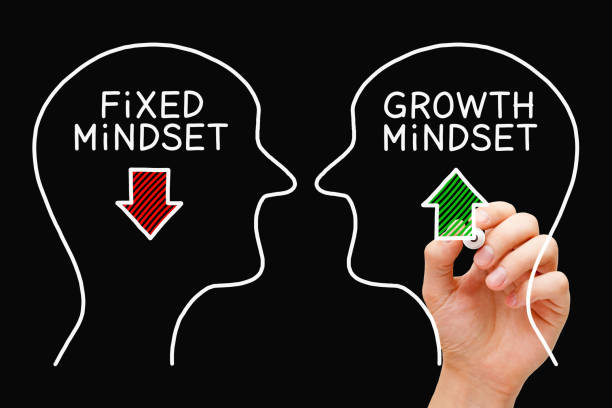
Mindset is often the underappreciated element of a sustainable fitness routine. Physical training may be the obvious challenge, but your mental approach—habits, beliefs, and discipline—can make a bigger difference in your long-term success.
7.1 Cultivating Self-Compassion
Beginners often adopt a harsh, critical mindset: “I’m not strong enough,” “I messed up my diet,” or “I’ll never see results.” This negativity can lead to a cycle of demotivation. Instead, practice self-compassion:
- Treat yourself as you would a close friend: with kindness and understanding.
- Acknowledge that mistakes are part of learning.
- Focus on what you can do rather than what you can’t.
By redefining setbacks as learning opportunities, you’ll remain resilient when challenges arise.
7.2 Visualizing Success
Visualization can be a powerful technique to keep you motivated. Spend a few minutes daily imagining yourself completing your workouts, feeling energized, and reaping the rewards of a healthier, fitter body. This mental rehearsal can prime your brain for success, boost confidence, and reduce performance anxiety.
7.3 Techniques to Manage Stress
Stress has a ripple effect on fitness, impacting recovery, hormone balance, and your ability to stay consistent. Incorporating stress management techniques into your routine can dramatically improve both physical and mental outcomes:
- Meditation or Mindful Breathing: Even a 5-minute session before bed or upon waking can help clear your mind.
- Journaling: Writing down your thoughts can help you process emotions and keep track of triggers for stress-eating or workout procrastination.
- Active Relaxation: Yoga, gentle walks, or stretching can relax the mind while still engaging the body.
7.4 Positive Reinforcement
Set yourself up for success by creating reward systems. For instance, reward yourself with something small (not necessarily food-based) after two weeks of consistent workouts—like a new workout shirt, a book, or an experience you enjoy. Over time, these “treats” can reinforce the positive habit loop, making you more eager to continue.
8. Practical Scheduling and Time Management Tips

One of the biggest hurdles for beginners is finding time to work out consistently. Work, family obligations, or busy social lives often take precedence, leaving fitness on the back burner. However, even a jam-packed schedule can accommodate a sustainable fitness routine with strategic planning.
8.1 Time Blocking
Time blocking involves setting aside specific blocks of time for tasks—an approach that works well for busy individuals. For instance, if you decide that 6:00-6:30 a.m. each Monday, Wednesday, and Friday is your workout time, treat that slot like an unbreakable appointment. Write it in your planner or calendar. This approach makes you less likely to skip workouts due to lack of planning.
8.2 Break Workouts Into Segments
If a full 30-45 minute workout seems daunting, split it into shorter bouts—for example, 15 minutes in the morning and 15 minutes in the evening. Studies show that shorter, more frequent sessions can be just as effective as one longer session, especially for beginners.
8.3 Morning vs. Evening Workouts
Determining the best time of day to exercise is largely personal preference. Morning workouts can give you an energy boost and reduce the chance of postponement due to unexpected daytime events. Evening workouts may offer improved performance due to higher body temperatures and can help relieve stress after work. Experiment to find what fits your lifestyle and body rhythm.
8.4 Making the Most of Commutes and Breaks
Look for hidden opportunities:
- Walking or cycling to work instead of driving
- Using lunch breaks for a quick gym session or brisk walk
- Performing desk exercises or stretches every hour
These small bouts of activity add up, especially if you struggle to find a dedicated workout window.
9. Overcoming Common Beginner Challenges
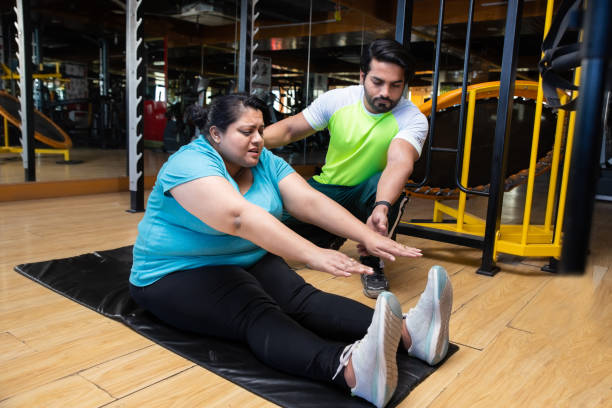
Starting a fitness routine is exciting, but real-life obstacles can quickly dampen enthusiasm. Recognizing and preparing for these common challenges is crucial for success.
9.1 Lack of Immediate Results
You might not notice a drastic change in your weight, appearance, or strength in the first few weeks. Remember that physical transformations take time. Focus on non-scale victories, such as improved mood, better sleep, or increased energy levels, to stay motivated in the early stages.
9.2 Fear of Judgment
Gym intimidation is common. Beginners often worry about looking inexperienced in front of seasoned gym-goers. Here are a few ways to counteract this anxiety:
- Workout at Home: If the gym atmosphere feels overwhelming at first, start with home workouts.
- Research Proper Form: Walking into the gym with some knowledge about exercises can boost confidence.
- Consider a Gym Buddy: Working out with a friend can diffuse social anxiety and keep you accountable.
9.3 Plateaus
Progress often comes in spurts—rapid improvements at first, followed by plateaus where gains seem to stagnate. Plateaus are normal. The key is to:
- Adjust your routine (add new exercises, vary intensity, or try interval training)
- Revisit your goals and see if they need updating
- Ensure you’re getting adequate nutrition, rest, and recovery
9.4 Injury and Soreness
Muscle soreness is common when starting new exercises. While some soreness can be a sign of muscle adaptation, persistent or sharp pain could signal overuse or incorrect form. Always differentiate between normal soreness (delayed onset muscle soreness) and potential injuries. Listen to your body, rest when needed, and consult a professional if pain persists.
10. Useful Tools, Apps, and Resources
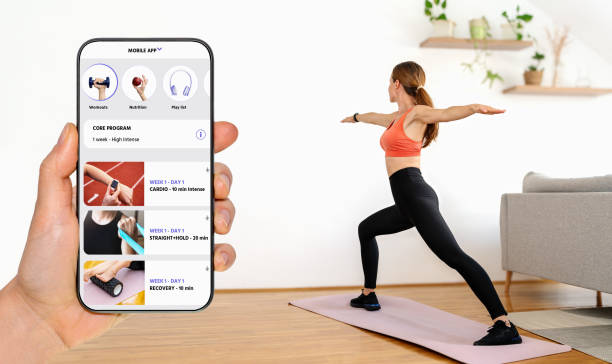
Technology can significantly streamline your fitness journey. From tracking workouts to providing motivation and guidance, the right tools can make a huge difference in sustaining your routine.
10.1 Fitness Apps
- MyFitnessPal: Great for tracking calorie intake, macros, and micronutrients.
- Fitbod: Suggests personalized workout plans based on your goals and available equipment.
- Nike Training Club / Adidas Training: Offers free guided workouts with video demonstrations.
- Strava: Popular among runners and cyclists for tracking distances, paces, and routes.
10.2 Wearable Devices
- Fitbit: Tracks steps, heart rate, sleep, and calories burned.
- Apple Watch: Comprehensive health tracking, workout app integration, and motivational rings.
- Garmin: Renowned for GPS accuracy, ideal for outdoor cardio like running or cycling.
10.3 Online Communities
- Reddit Fitness Communities (e.g., r/Fitness, r/loseit, r/running): Great for tips, success stories, and Q&A.
- Facebook Groups: Niche fitness communities for everything from CrossFit to yoga.
- YouTube Channels: Reputable trainers offer free tutorials and workout routines (e.g., Fitness Blender, HASfit, Yoga with Adriene).
10.4 Personal Trainers and Coaches
If you prefer one-on-one guidance, hiring a certified personal trainer—either in person or online—can drastically reduce the guesswork. A qualified trainer can help you:
- Design a personalized workout plan
- Teach proper exercise form
- Provide ongoing support, motivation, and accountability
11. Putting It All Together: Creating Your Routine

Now that you understand the core components—cardio, strength, flexibility, rest—along with the importance of nutrition, mindset, and practical scheduling, it’s time to design a routine that fits your life. Below is a general template that you can adapt as needed.
11.1 Sample Weekly Routine
| Day | Activity | Notes |
|---|---|---|
| Monday | Cardio (Moderate-Intensity) | 30 min brisk walk or light jog. Finish with static stretches. |
| Tuesday | Strength (Full Body) | 3 sets of squats, lunges, push-ups, and planks. Focus on form. |
| Wednesday | Active Rest / Mobility | Gentle yoga, foam rolling, or light stretching session. |
| Thursday | Cardio (Interval Training) | 20 min intervals (1 min fast pace, 1 min recovery). |
| Friday | Strength (Full Body or Split) | If full body, add pull-ups or rows. If split, focus on upper body. |
| Saturday | Long Walk / Bike / Hobby Activity | Keep it low-impact but aim for at least 45 min of movement. |
| Sunday | Rest or Active Recovery | Light stretching, gentle walk. Stay hydrated, focus on nutrition. |
11.2 Adaptations for Busy Schedules
- High-Intensity Interval Training (HIIT) sessions can compress effective workouts into 20 minutes or less.
- Combine strength and cardio in circuit workouts, alternating between resistance exercises and short cardio bursts.
- Use weekends for longer sessions if weekdays are packed.
11.3 Reassessing and Tweaking
Regularly evaluate your routine:
- Are you seeing progress in key metrics (e.g., endurance, strength, flexibility)?
- Are you enjoying the activities you’ve chosen? If not, what could you swap in?
- Is your schedule sustainable, or do you feel overly stressed?
Make small changes—such as adding a new exercise or adjusting sets, reps, or workout days—if you hit a plateau or find your schedule shifting.
12. Tips and Takeaways

- Prioritize Consistency Over Perfection: Skipping a workout or indulging in a treat occasionally is normal. Focus on long-term habits and get back on track without guilt. Progress is built through consistency, not perfection.
- Listen to Your Body: Pay attention to signs of fatigue or discomfort. Rest when needed, and address persistent pain with a healthcare professional. Incorporate active recovery methods like stretching or yoga to keep your body moving without strain.
- Continual Learning: Stay informed about fitness trends, techniques, and nutrition. Adjust your routine as you grow stronger and more experienced to keep things exciting and effective.
- Celebrate All Wins: Recognize small victories, whether it’s lifting heavier weights, running farther, or eating healthier meals. Rewarding progress boosts motivation and reinforces positive habits.
- Find Your Community: Surround yourself with supportive friends, workout partners, or online groups to stay accountable and motivated. Shared goals and encouragement can make fitness more enjoyable.
- Make Fitness Fun: Choose activities you love—dancing, hiking, swimming, or cycling—so workouts feel less like a chore and more like an adventure. Enjoyment is key to sustainability.
- Fuel Your Body Right: Focus on balanced meals rich in protein, healthy fats, and complex carbs. Stay hydrated and don’t skip meals, especially before or after workouts, to support energy and recovery.
- Track Progress and Adjust Goals: Use fitness apps, journals, or wearable devices to monitor improvements. Set short-term milestones and adjust goals as you evolve to maintain momentum.
- Prioritize Rest and Recovery: Sleep and rest days are essential for muscle repair and overall performance. Don’t overlook their importance in avoiding burnout and sustaining progress.
- Stay Patient and Trust the Process: Results take time—focus on steady progress rather than quick fixes. Celebrate the journey and trust that consistent efforts lead to lasting change.
13. Final Thought: Embrace the Journey
Starting a sustainable fitness routine is a lifelong commitment that brings lasting benefits to your health, energy, and mental well-being. Focus on balance—strength, cardio, flexibility, rest, and nutrition—for long-term success. Consistency is key. Set realistic goals, track progress, and celebrate milestones. Stay adaptable and listen to your body, maintaining momentum through life’s ups and downs. Whether at home, the gym, or in classes, begin where you are and evolve gradually.
Congratulations on taking the first step! Stay committed and enjoy the journey. For more tips, visit aayushii.com.
FAQ: The Sustainable Fitness Routine
1. How do I get started with a sustainable fitness routine?
Start by setting realistic goals, focusing on balance across strength, cardio, flexibility, and rest. Begin with activities that you enjoy and gradually increase intensity over time. Consistency is key—start small, stay consistent, and build from there.
2. How often should I work out?
Aim for at least 3-5 days a week, mixing different types of exercises (strength training, cardio, flexibility). The key is to listen to your body, rest when needed, and avoid overtraining to prevent burnout or injury.
3. How do I stay motivated to stick with my fitness routine?
Set small, achievable goals and track your progress. Celebrate milestones, no matter how small. Surround yourself with a supportive community, whether in person or online, and remind yourself of your long-term goals to stay focused.
4. What should I eat to support my fitness goals?
Focus on a balanced diet rich in whole foods. Include lean proteins, complex carbs, healthy fats, and plenty of fruits and vegetables. Hydration is also essential—drink water throughout the day to stay energized and support recovery.
5. How do I track my progress effectively?
Use a workout journal, fitness apps, or wearable devices to track your workouts, calories burned, and progress. Regularly assess key metrics such as strength, endurance, flexibility, and body composition to stay on track with your goals.
6. How can I avoid injuries while working out?
Proper form is crucial—start with lighter weights or lower intensity to ensure you’re performing exercises correctly. Incorporate warm-ups and cool-downs to prevent injury, and always listen to your body. Rest when you feel fatigued or experience discomfort.
7. What if I have a busy schedule?
Choose efficient workouts like HIIT or circuit training that can be completed in less time. Plan your workouts in advance and try to fit them into your routine, whether it’s early in the morning, during lunch, or in the evening. Consistency is more important than duration.
8. How important is rest and recovery?
Rest is essential for muscle repair and overall recovery. Make sure to take at least one or two rest days each week, and incorporate active recovery like stretching or yoga. Sleep is also crucial—aim for 7-9 hours each night to allow your body to recover fully.
9. Can I work out at home, or do I need a gym membership?
You can absolutely build a sustainable fitness routine at home with minimal equipment. Bodyweight exercises like squats, push-ups, and lunges are effective. There are also plenty of online resources and apps that offer guided workouts for all fitness levels.
10. How do I overcome plateaus in my fitness progress?
Plateaus are a normal part of any fitness journey. To break through them, try varying your workouts, increasing the intensity or volume, and focusing on different muscle groups. Stay patient and keep challenging your body in new ways.

